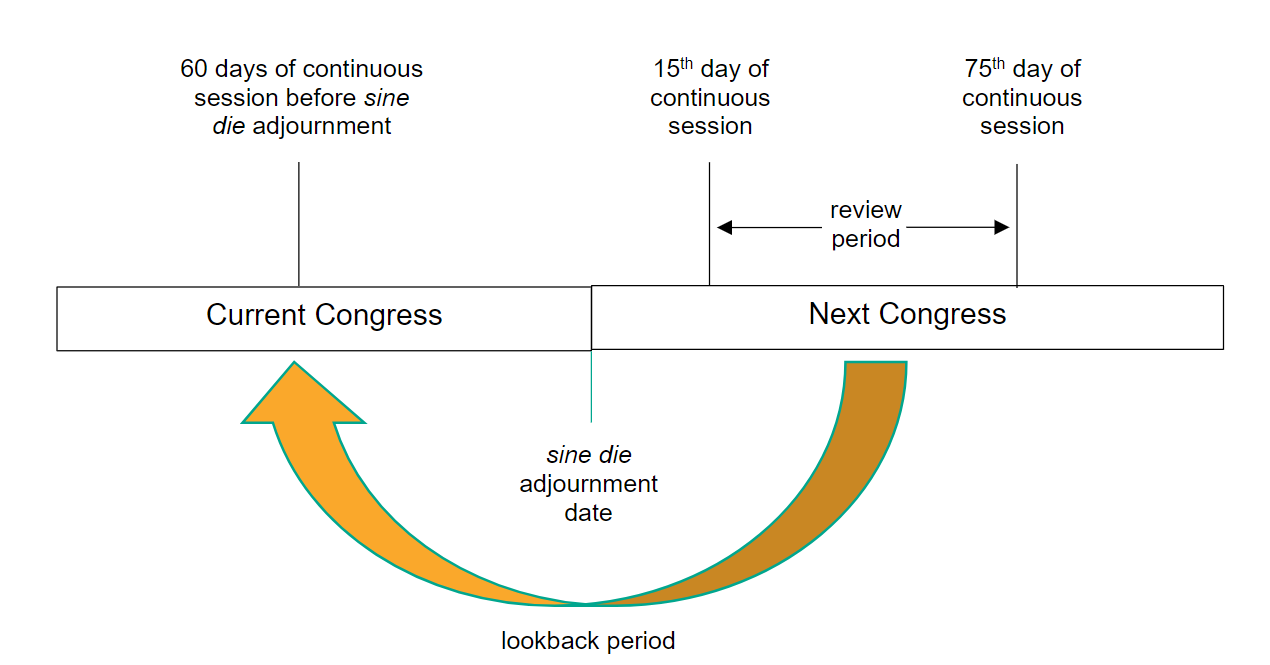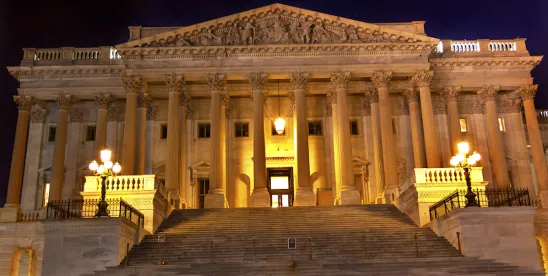Background
With the federal elections looming later this year, it’s time once again to review the Congressional Review Act (CRA) and how it might impact the current administration’s regulatory agenda.
HOW THE CRA WORKS
The CRA empowers Congress to invalidate regulations issued by federal agencies. Under the CRA, before a rule can take effect, federal agencies must report the rule to the House and Senate. Within 60 days of “continuous session” after receipt of a rule, any member of Congress can introduce a joint resolution of disapproval (a CRA resolution), which is referred to the relevant committee of jurisdiction. The 60 days of continuous session available to Congress to review a rule under the CRA are legislative days in the House and days of session in the Senate. Therefore, the period available to Congress to review a rule under the CRA is dependent on the congressional calendar.
The CRA establishes fast-track procedures in the Senate, available for 60 Senate session days after a rule is received by Congress, for both committee and floor consideration of a resolution. When 20 calendar days have elapsed since Congress’ receipt of a rule, a petition signed by 30 senators can be used to discharge a CRA resolution from committee. Once a resolution is reported or discharged out of committee, any senator can make a nondebatable motion to proceed to consideration of the resolution, which requires only a simple majority for adoption. The CRA does not establish similar discharge procedures for the House.
CRA LOOKBACK PERIOD IN A NEW CONGRESS
To prevent administrations from issuing rules at the end of a session of Congress, thereby denying the House and Senate adequate time to review the rule, the CRA establishes a lookback period. During that period, the next session of Congress can review rules submitted during the previous Congress. More specifically, under the CRA, if a rule is submitted to Congress within 60 days of continuous session of a sine die adjournment (that is, an adjournment where Congress has not established a day to appear again), a lookback period applies. During the lookback period, the CRA clock starts over again, beginning on the 15th day of continuous session of the new Congress. A sine die adjournment typically happens at the end of every legislative session, in December. The last date a rule submitted to Congress could be subject to the CRA in the next Congress is therefore 60 legislative days prior to the date of sine die adjournment, typically in late spring or early summer. The next Congress would then have 60 legislative days after the 15th day of continuous session to review a rule that had been submitted at the end of the last session of Congress.

A CRA resolution must be passed by both chambers of Congress and signed by the president. If the resolution is vetoed, Congress can override the veto with a supermajority of two-thirds in both the House and Senate.
EFFECT OF A CRA RESOLUTION
If a CRA resolution is enacted for a rule that has not yet taken effect, the resolution prevents the rule from taking effect. If a CRA resolution is enacted for a rule that has already gone into effect, the rule is treated as if it had never taken effect. In either case, the agency that issued the rule is prohibited from reissuing a rule that is substantially the same as the disapproved rule, unless subsequent law authorizes the agency to do so. Thus, a successful CRA resolution is a powerful tool.
RULES THAT FALL UNDER THE CRA
The CRA uses the Administrative Procedure Act definition of a rule as an agency action that is “designed to implement, interpret, or prescribe law or policy.” This broad definition includes agency actions that, under the Administrative Procedure Act, would not be subject to notice and comment rulemaking, including guidance documents and interim final rules. Proposed rules and executive orders are not subject to the CRA.




 />i
/>i

